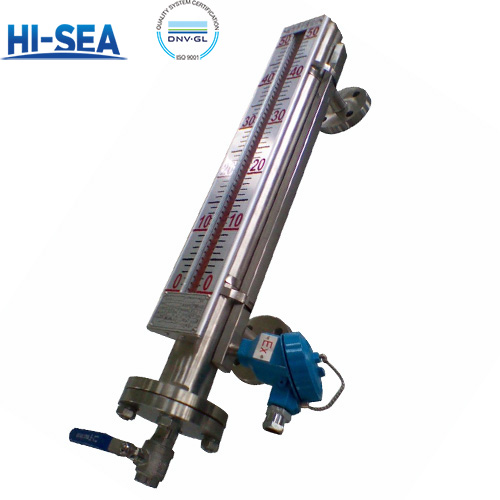
Marine Level Gauge
1. Explosion Proof:
Models available with certifications for hazardous areas (ATEX, IECEx, FM, CSA).
2. Ingress Protection:
Typically IP65 or higher (up to IP68 for some models).
3. Output Signal:
Analog (4-20 mA).
Digital (HART, PROFIBUS, Modbus).
4. Power Supply:
24 VDC for transmitters.
Options for battery-operated or loop-powered devices.
Overview
Applications:
1. Fuel Management: Monitoring fuel levels to optimize consumption and ensure sufficient supply during voyages.
2. Ballast Control: Managing ballast water levels to maintain the ship's stability and balance.
3. Cargo Operations: Ensuring accurate loading and unloading of liquid cargo to prevent spillage and overloading.
4. Water Management: Monitoring potable water, waste water, and other water tanks to ensure proper operations and hygiene.
Considerations:
Accuracy: Different applications may require different levels of accuracy. For example, fuel management might need very precise measurements.
Environmental Conditions: The gauge must be suitable for the environmental conditions, such as temperature, pressure, and the presence of corrosive substances.
Maintenance: Consideration of how often and easily the gauge can be maintained or calibrated.
Integration: Ability to integrate with the ship’s existing systems for monitoring and automation.





